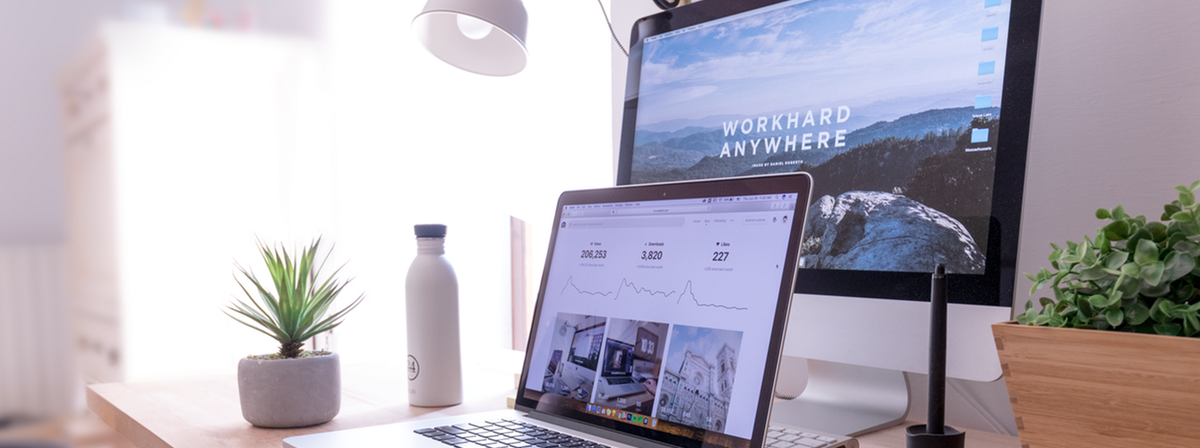Seven ways to organise your working space for maximum productivity

You spend a third of your life at work, that's almost 90,000 hours with much of it tied to a laptop. Which means that your mood, concentration, health and work performance all suffer if you don't tick the right ergonomic and productivity-boosting boxes when organising your environment. Poor lighting, colour, temperature and sound management can leave you squinting, sleeping, sweating, shivering or seriously grrr at noisy office neighbours. Poor posture and ergonomics, how your devices, desk and workspace is set up, can pretty much leave you injured. So avoid common desk set-up mistakes, reduce the risk of sprains and strains and boost your productivity with these tips for organising your desk space:
1. Light up
Dim and harsh lighting like fluorescents cause eyestrain, headaches, drowsiness and lack of focus. Well-lit desks help you stay alert and productive. Glare or reflections on your screen can cause eyestrain. Natural light is best for happy, productive workers. If you don't have a window or skylight, 'blue-enriched' light bulbs can help boost performance by supporting mental sharpness and reducing sleepiness.2. Pot a plant
Plants can increase productivity by 15%, improve creativity, memory and well being, while reducing tension, anxiety and fatigue. Just remember to water them!3. Take you temperature
Baby it's cold outside - and it's a sauna in the office. Sound familiar? The Goldilocks approach to temperature works best for office productivity, not too hot or too cold, with between 22 and 25 degrees Celsius being ideal. A Cornell University study found employees made fewer typing errors and had double the productivity rate working in 25 degrees Celsius compared to those working in 20 degrees.4. Colour your world
Colour impacts mood, productivity and performance. In proof-reading and clerical tests run by the University of Texas, workers in white and light coloured offices made more errors than those in red, blue, green and purple offices. Warm colours (red, orange, pink or yellow) makes people feel happy, optimistic and drives productivity. Red increases energy; yellow stimulates creativity. Cool colours (blues, greens, purples and greys) are soothing, relaxing, boost concentration and reduce anxiety. Blue inspires communication and focus; green is calming if you work long hours. Stark white rooms feel clinical and uncomfortable. If you're stuck with a neutral wall, brighten your space with colourful cushions, art, accessories or plants.5. A sound approach
Offices, especially open plan ones are noisy. A UK study found noisy work environments decrease accuracy by 67%. When conversations are quieter, focus improves (by 48%), distraction drops (by 51%) and stress lessens (by 27%). If you can't close a door or add a partition, low-level background music can help. Music without lyrics, at low ambient levels work best.6. Ergonomics essentials
The twist is a 1950s dance, not a way to work at your desk. You should be able to use your computer screen, keyboard, desk and chair comfortably without twisting your head or body. Good office ergonomics lowers stress and reduces injuries from awkward positions and repetitive tasks. Keep your:- Keyboard directly in front of you with forearms supported on the front of the desk when typing
- Monitors at arm's length and eye height
- Mouse close to your body and keyboard to avoid awkward twisting and reaching
- Chair adjusted so your knees are at right angles and feet flat on the ground or a footrest
- Tech streamlined - Smart accessories including docks, hubs and stands keep your desk free of clutter and cables and leave essential tech within easy reach


 Australia / New Zealand
Australia / New Zealand